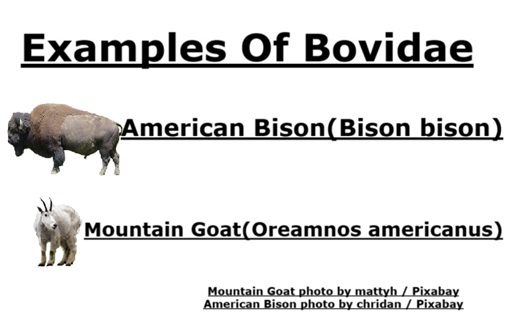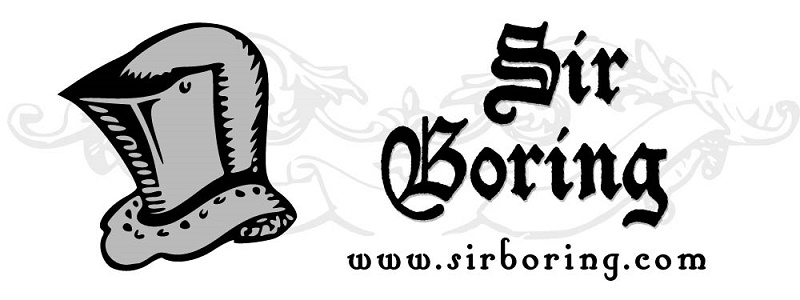
The Bovidae family, encompassing a remarkable array of animals such as cows, goats, sheep, and antelopes, represents one of the most diverse and fascinating groups in the animal kingdom. This family is not only rich in biodiversity but also plays crucial roles in both ecosystems and human societies across the globe. From the gentle grazing of a cow in a serene pasture to the agile leaps of a Mountain Goat(Oreamnos americanus) navigating rocky cliffs, members of the Bovidae family exhibit a variety of adaptations that allow them to thrive in a wide range of environments. The Bovidae family is classified in the mammalian order Artiodactyla.
The Diversity Of Bovidae
Bovidae is a family characterized by its extensive diversity, comprising over 140 species categorized into numerous genera. The Bovidae family is divided into several subfamilies:
- Aepycerotinae
Aepycerotinae consists of just one antelope species, which is the Impala(Aepyceros melampus). The Impala lives in Eastern and Southern Africa where it inhabits grasslands. The Impala is also known as the Rooibok. - Alcelaphinae
Alcelaphinae includes, wildebeest, tsessebe, topi, hartebeest, blesbok, and bontebok. - Antilopinae
Antilopinae includes gazelles, dik-diks, the Gerenuk(Litocranius walleri), the Dibatag(Ammodorcas clarkei), and the Blackbuck(Antilope cervicapra). These species are found in Africa and Asia. - Bovinae
Bovinae includes cattle, Bison(Bison bison), African Buffalo(Syncerus caffer), water buffalos, and the four-horned and spiral-horned antelopes. - Caprinae
Caprinae includes goats, sheep, tahrs, ibexes, chamois, gorals, Muskox(Ovibos moschatus), and Takin(Budorcas taxicolor). - Cephalophinae
Cephalophinae consists of duikers, which are antelope that are found in Africa. - Hippotraginae
Hippotraginae is made up of grazing antelopes. This subfamily includes, oryx, Roan Antelope(Hippotragus equinus), Sable Antelope(Hippotragus niger), and the Addax(Addax nasomaculatus). - Nesotraginae
Nesotraginae consists of only 2 species of dwarf antelopes, the Bates’s Pygmy Antelope(Nesotragus batesi) and the Suni(Nesotragus moschatus). These 2 species live in Africa. - Oreotraginae
Oreotraginae consists of only 1 species, the Klipspringer(Oreotragus oreotragus). The Klipspringer is a small antelope which inhabits savanna, desert, inland cliffs, and mountain peaks in eastern and southern Africa. - Reduncinae
Reduncinae includes, lechwe, reedbuck, the Gray Rhebok(Pelea capreolus), The Puku(Kobus vardonii), the Kob(Kobus kob), and the Waterbuck(Kobus ellipsiprymnus).
Each species has unique characteristics that suit their specific habitats, from the vast savannas of Africa to the mountainous terrains of the Himalayas. For example, the Domestic Cow(Bos taurus) has been a cornerstone of agricultural societies for thousands of years, providing milk, meat, and leather. In contrast, the agile Mountain Goat(Oreamnos americanus) is perfectly adapted to life in steep, rocky terrains, with its strong hooves and climbing abilities allowing it to navigate challenging landscapes. The diversity within the Bovidae family illustrates the intricate tapestry of life on Earth and the various strategies animals employ to survive and thrive.
Ecological Importance Of Bovidae
Bovidae species play vital roles in their ecosystems, influencing vegetation, soil health, and the dynamics of predator-prey relationships. As herbivores, they contribute to the maintenance of grasslands and other habitats by grazing on vegetation. This grazing can stimulate plant growth and promote biodiversity by preventing any single species from dominating the landscape.
For instance, Blue Wildebeests(Connochaetes taurinus) are known for their migratory behavior across the Serengeti, where their grazing patterns help shape the landscape. Their movement ensures that grasslands are not overgrazed, allowing for a dynamic balance between herbivores and plant life. Moreover, the dung produced by Bovidae serves as a crucial nutrient source for soil, enhancing its fertility and supporting the growth of various plant species, which in turn supports other wildlife.
Social Structures And Behavior
One of the most captivating aspects of Bovidae is their social structures. Many species within this family exhibit complex social behaviors, forming herds or flocks that provide safety in numbers and improve their chances of finding food. The dynamics within these groups can vary significantly from species to species.
The social behaviors of bovids are fascinating. Herds of Blue Wildebeests, for instance, engage in synchronized migration, where they move together across vast distances in search of food and water. This behavior not only enhances their safety from predators but also helps them respond collectively to environmental changes.
Additionally, species like the Bighorn Sheep(Ovis canadensis) showcase intricate social hierarchies, where dominant males compete for access to females. These social interactions are essential for maintaining genetic diversity and ensuring the health of populations. Understanding these social dynamics enriches our appreciation of these animals and highlights the importance of preserving their habitats for future generations.
Conservation Challenges
Despite their significance, many Bovidae species face significant threats due to habitat loss and poaching. As human populations expand and agricultural practices intensify, natural habitats are increasingly encroached upon, leading to declines in wildlife populations. The international demand for meat and other animal products further exacerbates these challenges, putting immense pressure on wild populations.
For instance, the Saiga Antelope(Saiga tatarica) has seen its numbers plummet due to poaching for its horns and habitat degradation. Conservation efforts are crucial to safeguarding these species and their habitats. Organizations and governments around the world are working to implement measures that protect natural environments and promote sustainable practices.
Conservation Efforts And Success Stories
Conservation initiatives focused on Bovidae species have seen some success, showcasing the positive impact of dedicated efforts. Protected areas, such as national parks and wildlife reserves, play a crucial role in safeguarding the habitats of these animals. For example, the creation of the Serengeti National Park has been instrumental in preserving the migratory routes of wildebeests and other herbivores.
Additionally, community-based conservation programs have emerged, empowering local populations to engage in sustainable practices that benefit both wildlife and their own livelihoods. By involving communities in conservation efforts, these initiatives foster a sense of stewardship and promote the coexistence of humans and wildlife.
How To Get Involved
If you’re interested in learning more about Bovidae and their impact on our world, consider visiting your local wildlife reserve or farm. Observing these animals in their natural or semi-natural environments can deepen your connection to nature and spark a desire to support conservation efforts.
Participating in wildlife tours or volunteering with conservation organizations can also provide hands-on experiences that enhance your understanding of these animals and their ecosystems. Engaging with local initiatives focused on habitat restoration and sustainable farming practices can contribute to the preservation of Bovidae species and their environments.
Conclusion
In conclusion, the Bovidae family exemplifies the beauty and diversity of the natural world. By exploring their fascinating behaviors, ecological roles, and the challenges they face, we can develop a greater appreciation for these remarkable creatures. Through education, conservation efforts, and community engagement, we can work together to ensure the survival of Bovidae species and the health of our planet. By valuing and safeguarding these animals, we take an important step toward preserving the richness of biodiversity for future generations. Whether you are a wildlife enthusiast, a student of biology, or simply someone who enjoys the outdoors, recognizing the importance of Bovidae can inspire a lifelong commitment to conservation and the protection of our natural heritage.
